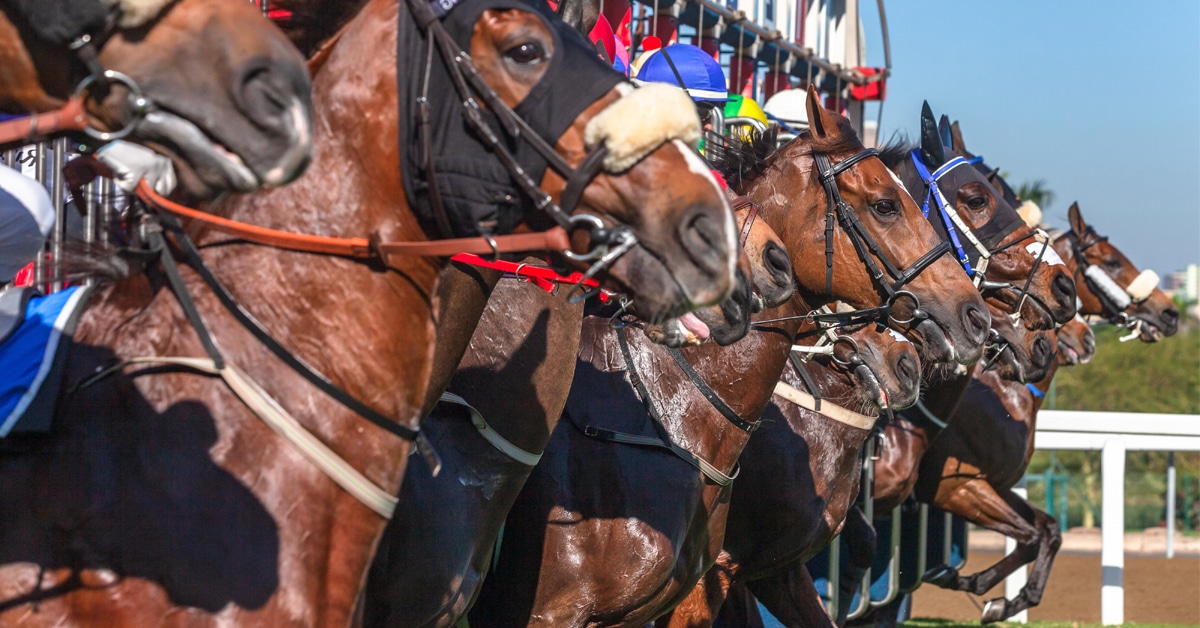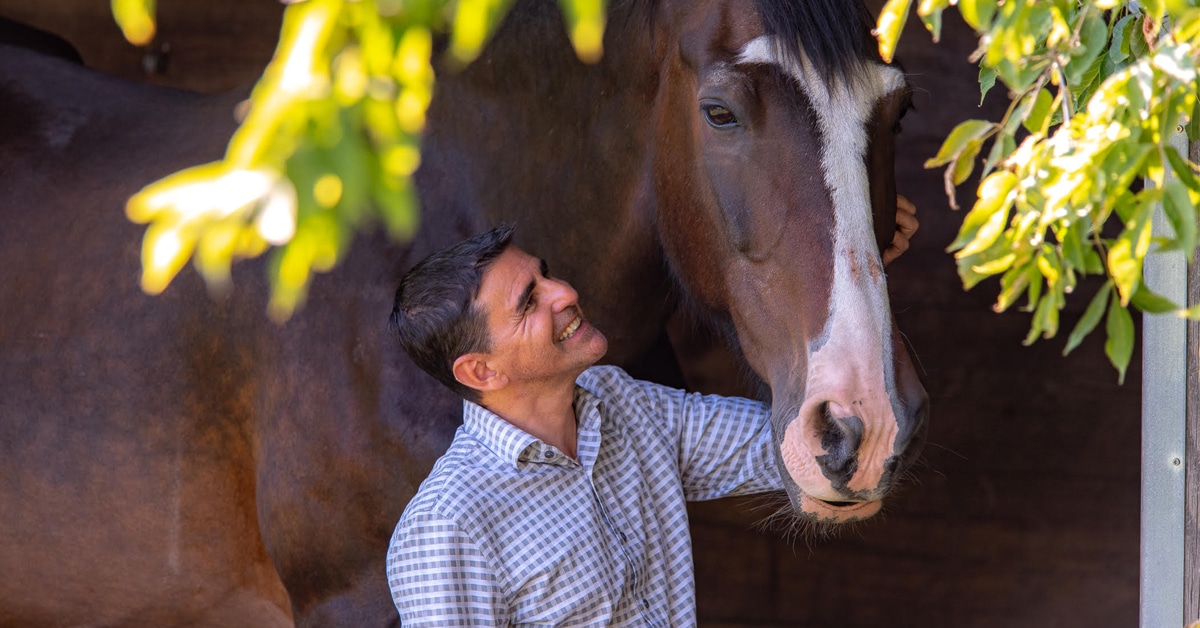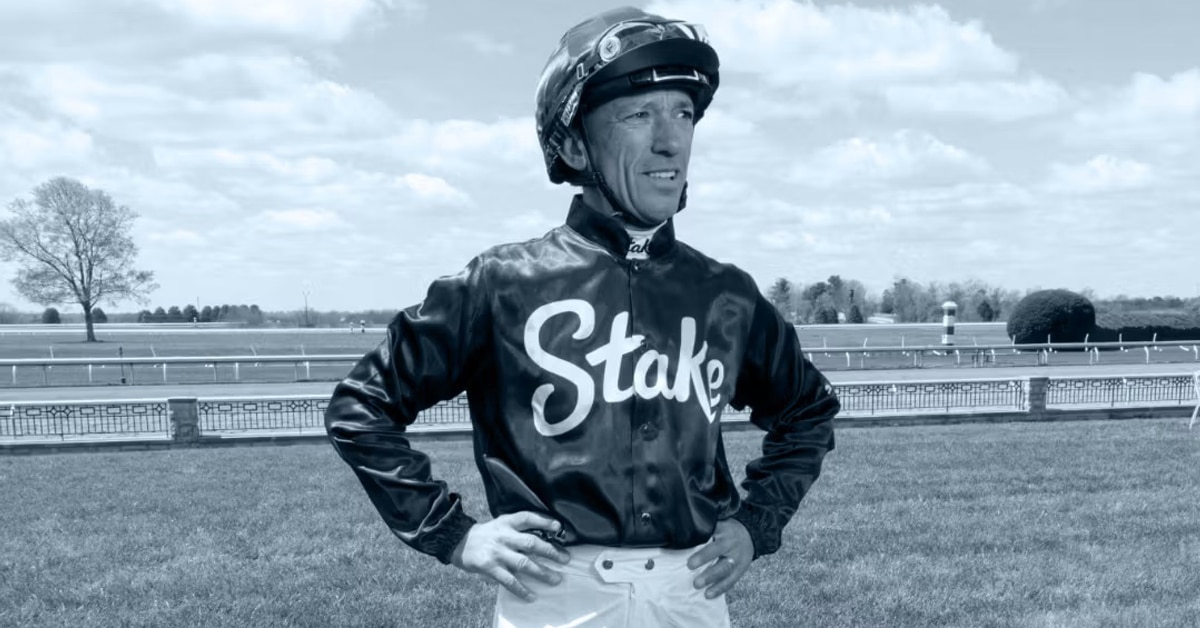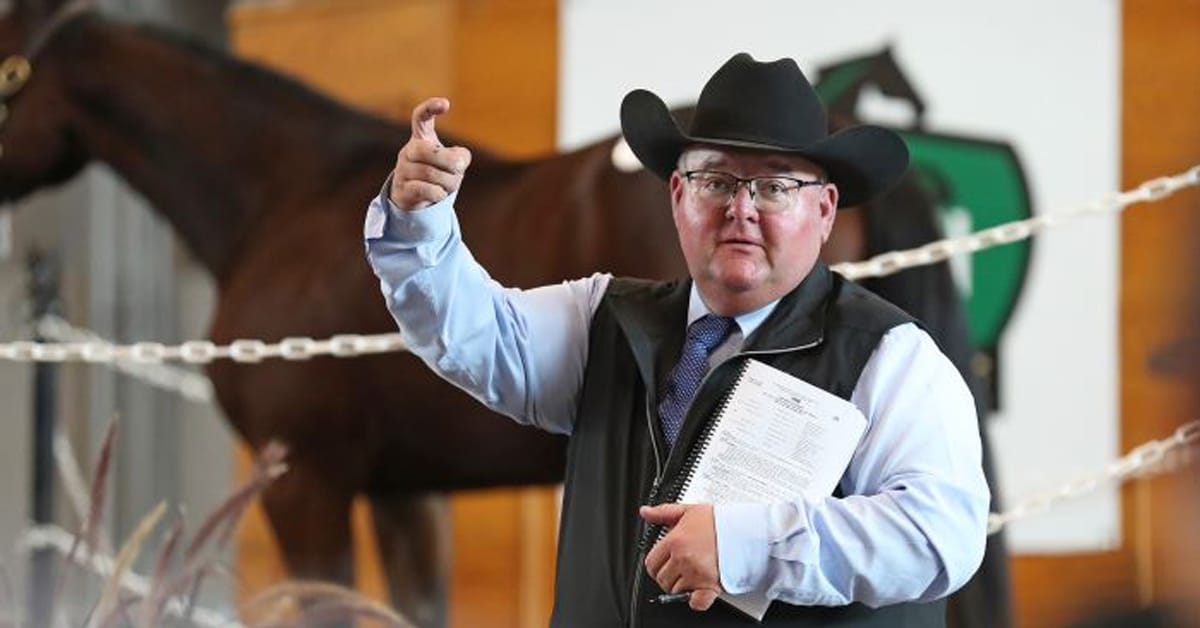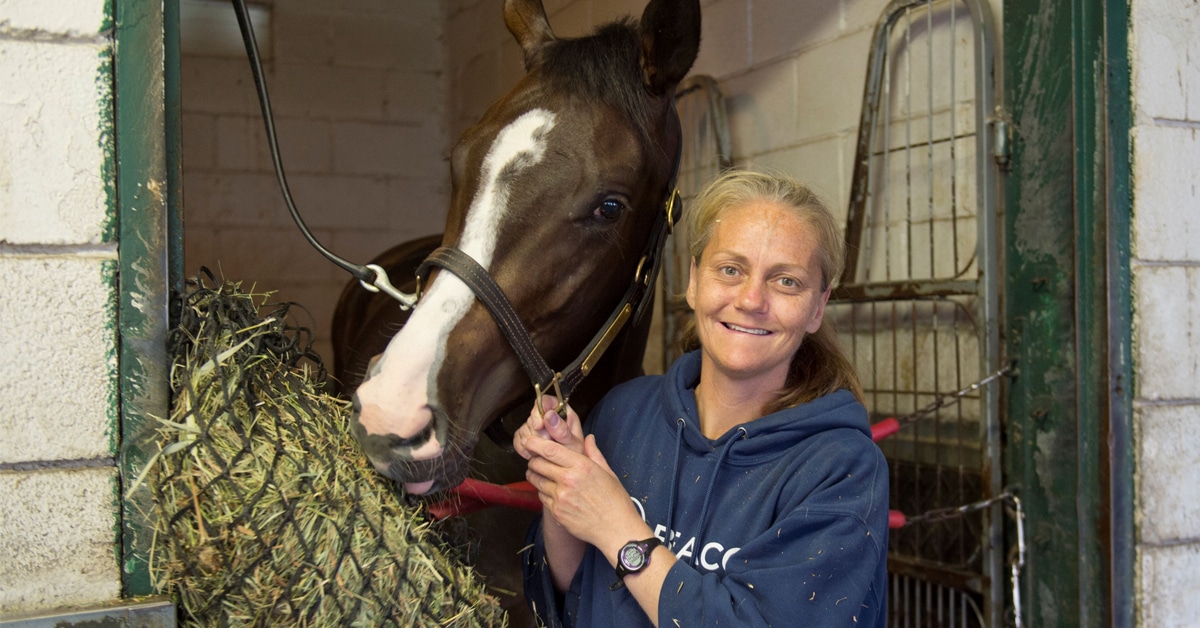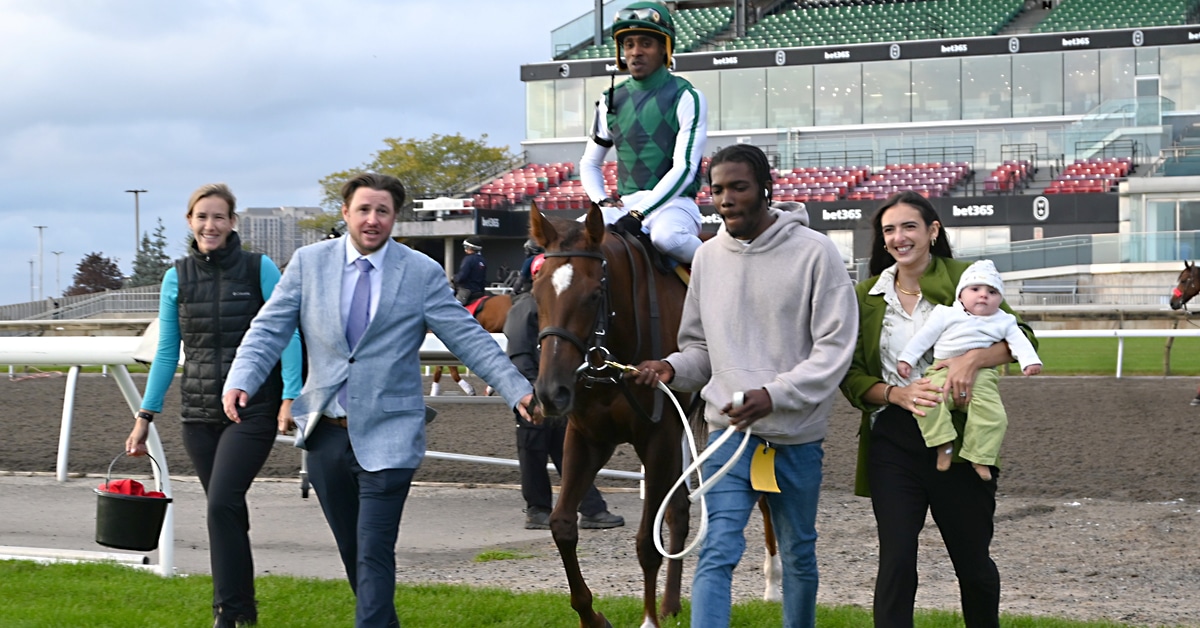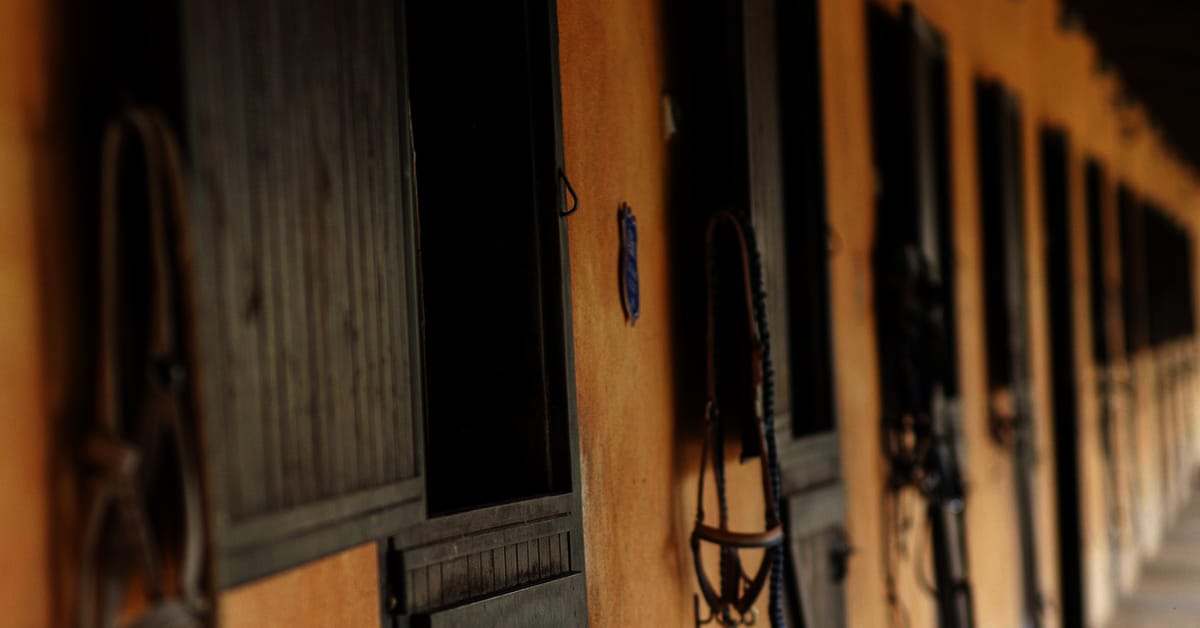Thoroughbred mare owners face many breed-specific challenges in the journey from making the decision to breed to seeing the foal stand and nurse. Industry politics aside, there are more difficulties for broodmare owners hoping to see their progeny on the track than ever before, and these challenges are unique to the Thoroughbred race industry.
Ultimately the success of any breeding is determined by several factors, perhaps most importantly the skill and communication of the broodmare owner, breeding manager and veterinarian, explains Liam O’Rourke, who is a graduate of the Irish National Stud’s Thoroughbred Breeding Course and is now the Sales Manager at Adena Springs North. “Determining the mare to be at her optimal time is a function of horsemanship, veterinary expertise and diagnostic tools,” he explained. “All of these methods are underscored by recording the results and information. The goal is to have the mare covered by the stallion once and achieve conception. This allows mare owners and stallion managers alike to be efficient with their horses and efficient with their expenses. This efficiency leads to better results when managing a broodmare band.”
Timing is Everything
Equine reproductive specialist Dr. Pamela Chesterfield notes that first and foremost it is important for the Thoroughbred breeder to understand the normal cycling activity of a mare in order to optimize the success of the breeding program. She has worked at prominent breeding facilities in Lexington, KY, and now devotes much of her time to ambulatory reproductive care and work at Woodbine Racetrack and Ajax Downs through her newly established Chesterfield Equine Veterinary Services. “The estrus cycle of the mare is roughly 21 days,” she explained. “There are four to seven days of estrus, or sexual receptivity, and 14-15 days of diestrus, which is what we call the time in which the mare is not receptive to the stallion mounting her.”
One of the biggest hurdles to overcome in the breeding of Thoroughbred mares is the difficulty in achieving a good heat cycle with the push to produce foals born in the early part of the year. Many breeders strive to produce an early foal date for the advantage it may give them with the universal January 1 birthday of all Thoroughbreds. As the average gestation in a mare is 335-342 days, the breeding season is roughly February 15 to the first week of July. It is a trend that has affected the commercial markets and poses the first challenge for mare owners, believes O’Rourke. “Theoretically a foal born in January or February will be ahead of foals born in May or June in terms of their ability to compete and have a quicker return-on-investment. It is encouraged with sellers of young horses often getting a premium for having earlier foals, though I’m not sure there is any evidence to indicate that an early foal is in any way better than a late season foal in terms of talent and speed. Canada’s most famous equine producer, Northern Dancer, was a late May foal, and one of the top older horses in North America currently is Mucho Macho Man, who was a June foal.”
The duration of light plays an important role in the reproductive performance of a mare, explained Dr. Chesterfield; with increased amounts of daylight comes higher reproductive performance. She suggests that in addition to natural light, mares in Ontario be exposed to eight to 10 weeks of increased artificial light commencing in early December. With light treatments helping to ensure an early cycle, veterinarians are also given the time to follow and record ovulation, which occurs roughly every 21 days, and allows for a uterine culture to ensure there is no bacterial or fungal growth.
“One of the major challenges to acquiring an early foal is that the mares are required to be cycling during a time of season when she would normally be in seasonal anestrus,” said Dr. Chesterfield. “For these reasons, artificial lighting systems are routinely used in the Northern Hemisphere to increase the photoperiod. It has been shown that 14-16 hours of light stimulus per day (natural followed by artificial) is adequate to induce cyclicity in mares. A problem often encountered is that the intensity of the light source being exposed to the mare is too low, such as in a dim barn or dark stall, and low light intensities may not be as effective at stimulating the desired response. Each mare should be within eight feet of a 200-watt light bulb, and should also have window space to allow identical exposure during daylight hours. It is important to note that if one chooses to use an artificial lighting program, they should also be sure to include their already-pregnant mares. Early foaling mares that are not exposed to light have a higher risk of entering seasonal anestrus post-foaling if they are not being exposed to the 14-16 hours of light daily.”
As mares transition from a winter seasonal anestrus, they will enter a transitional period often characterized by a lengthy and erratic heat cycle ending with an ovulation-thus beginning the stage of peak fertility, further explained Dr. Chesterfield. “During this transitional phase, the mare will experience waves of follicular activity without a dominant follicle. A commonly used therapy to shorten the transitional period is to administer progestogens; Regu-Mate is commonly used at 0.044 mg/kg daily by mouth for 10-14 days to a mare in late transitional estrus when the follicular size is greater than 25 mm in diameter. This therapy has been shown to possibly initiate a slightly earlier and more predictable ovulation. One must weigh the costs of such therapy to the savings in terms of a shortened, more predictable transitional period.
Physiological and Behavioural Hurdles
There are some mares who do not show a good heat or have difficulty coming into a good heat cycle, the reasons for which generally stem from either behavioural or physiological issues. Determining which can be a lesson in observation and detailed note-taking on the part of broodmare managers and owners. “One of my early lessons in the Thoroughbred industry was that you can’t have too many notes on a broodmare,” stresses O’Rourke. “Creating a book on each mare with a teasing chart, grading palpations and recording ultrasound results all add to knowing your mare inside and out, which will lead to better results both in the current year and the years to follow. This all leads to efficiency and effectiveness, which in turn allow the broodmare owner to reduce cost and achieve returns.”
Dr. Chesterfield notes that for performance purposes veterinarians try very hard to keep some mares from cycling on the track, which means that maiden mares beginning their careers as broodmares may take some time to develop a regular physiological cycle. If well-established teasing methods are available, waiting to breed mares until they have naturally established their regular cycles is the most viable option and is more cost-effective than more management intensive interventions.”
Many of the behavioural difficulties that hinder a mare coming into a correct heat cycle can be corrected with a meticulous management practice and knowledgeable breeding staff. It should be noted, however, that experience is necessary in a breeding program to detect subtle heat through teasing, and the management practices and setup of teasing should always be evaluated. “The risks to relying solely on teasing to detect your estrus mare is that some heat cycles will be missed,” cautions Dr. Chesterfield. “There are often mares that do not show heat to the teaser, whether it be because they are a nervous maiden or a protective mare with a foal at her side. To optimize the efficiency of the breeding program, I strongly recommend that the teasing program is complemented by a reproductive ultrasound by your veterinarian.”
Breeding to a mare with a foal at her side is done at the owners and veterinarians discretion. Dr. Chesterfield does encourage breeding on the foal heat in a very carefully selected mare. “I incorporate three main factors into my decision to breed on the foal heat,” she explained. “A uterine culture and cytology result, the appearance and feel of the uterus on palpation and rectal ultrasound, and the number of days post-foaling that ovulation occurs. In an ideal world, I want my foal heat mares to have a negative uterine culture and cytology at seven to eight days post-foaling, have a small uterus without fluid, and be ready for the shed at 10-12 days post foaling. Mares that do not meet this criteria are allowed to ovulate, with uterine infection and fluid treated if required, and are either allowed to proceed to 30 day heat or are artificially manipulated using hormones that shorten the lifespan of the corpus luteum, thus inducing estrus earlier than would occur naturally, which we call a short-cycle.”
A physiological case that is relatively easy to treat without hormones is lactational anestrus or nutritional anestrus, which occur when mares stop cycling during lactation because of loss of body condition. “Nutritional status and proper body condition plays a very important role in mares returning to estrus after foaling. It is important that the foaling mare has an adequate or slightly above normal body condition score going into foaling if we are hoping to have her cycling normally after foaling. If she goes into foaling undernourished, there is a good chance she will be slow to return to cycle.”
Experienced breeders who utilize good management practices in conjunction with proper veterinary care should have no trouble identifying and treating mares with difficult or unpredictable heat cycles. Observing and recording behaviour and knowing the history of the mare will help to identify a difficult mare due to behavioural anestrus; once those issues have been ruled out you can focus on the source of a problem with a veterinarian to discover the cause of any physiological issues
The Latest
